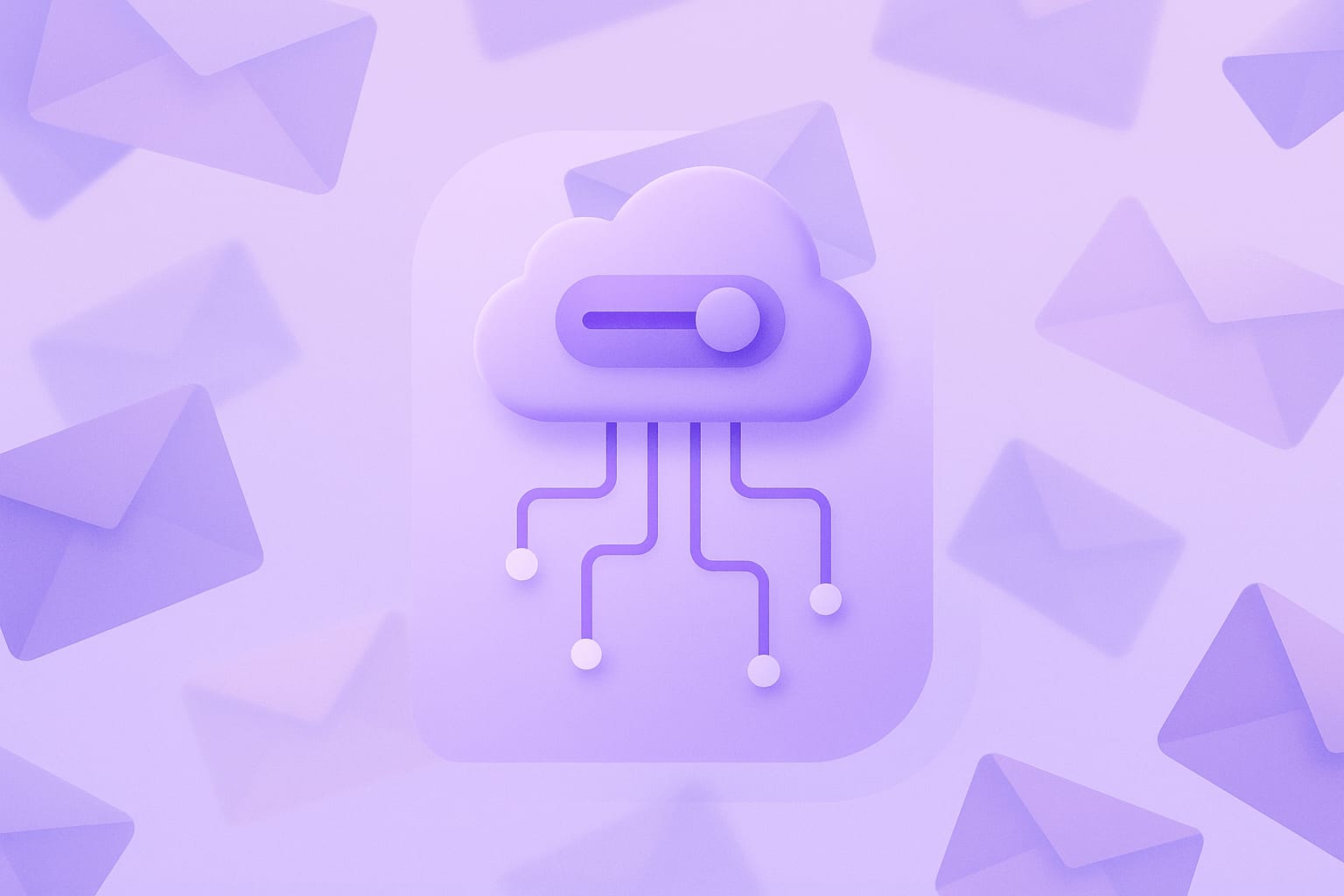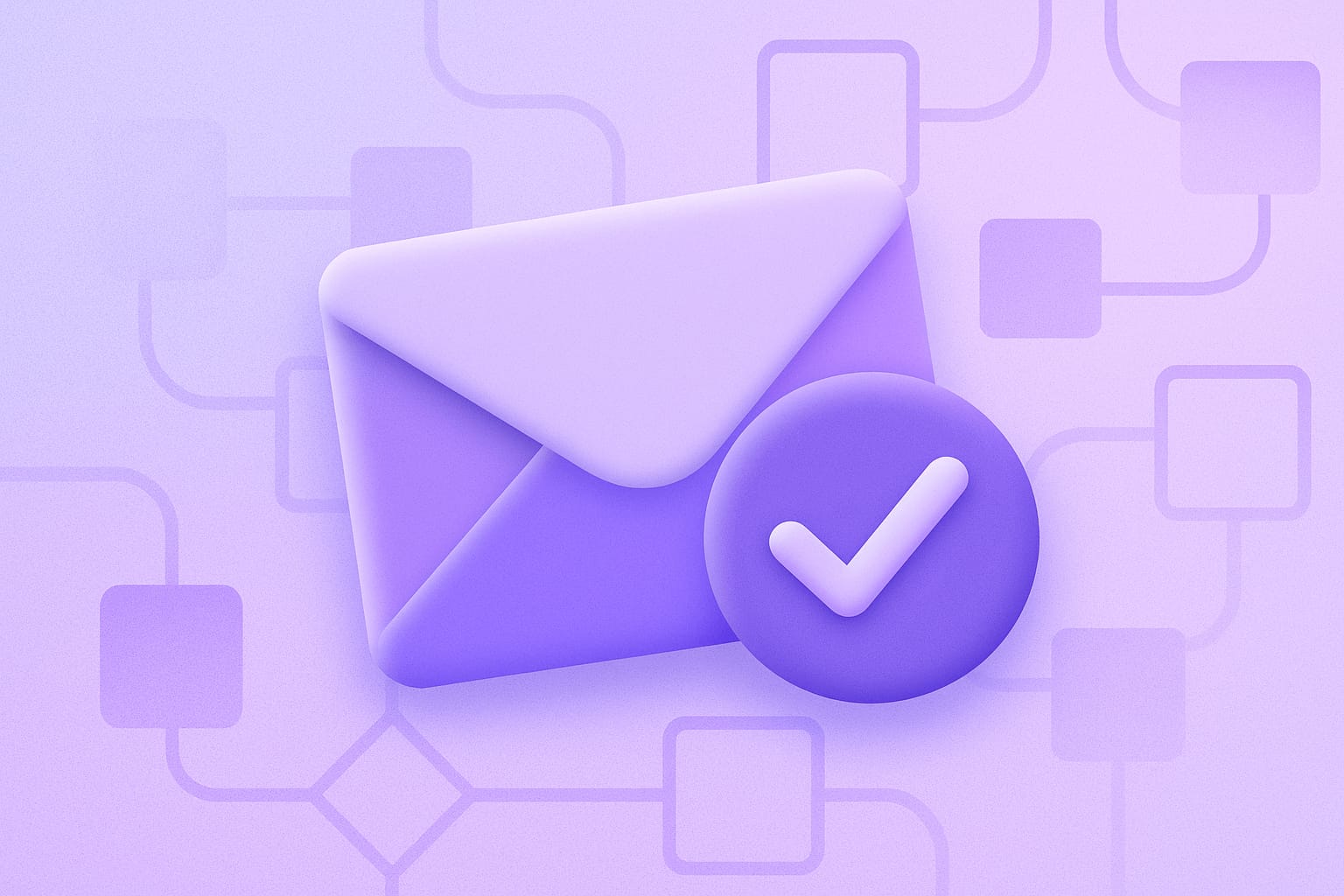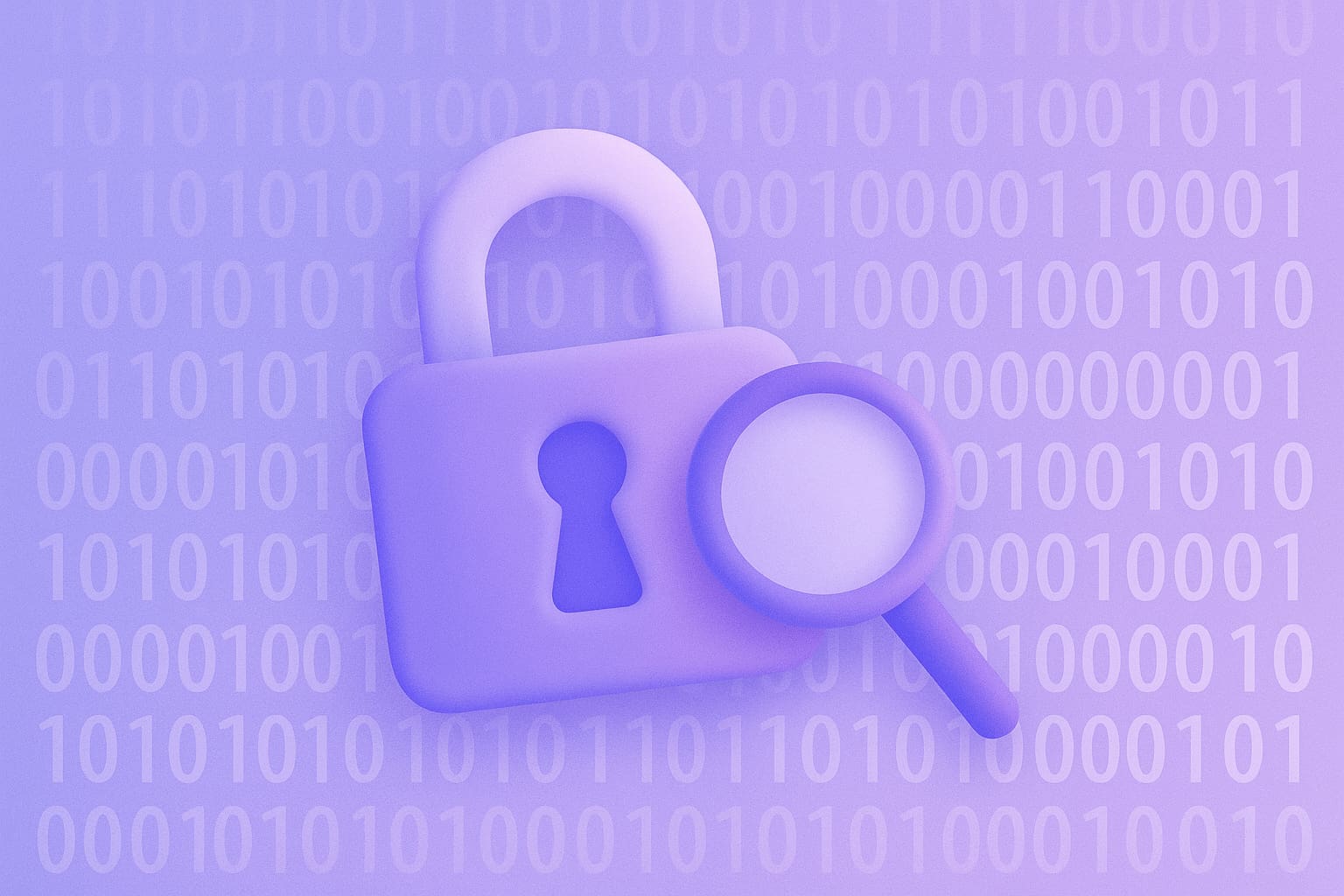Your email address has become your digital passport, as it connects you to every app, website, tool, or online service. Yet it’s also one of the easiest ways for your personal information to be tracked. This means being shared and misused. Every time you enter your email on a website, you’re exposing a piece of your identity. This is why a good temporary email is so relevant nowadays.
A temporary e-mail (also called temp mail or disposable email) offers a simple but powerful layer of privacy. It provides a short-term, anonymous inbox that keeps your main email safe from spam and data leaks. And yes, also prevents you from getting into unwanted marketing lists.
No matter if you’re signing up for a free trial or just testing your software a bit, avoiding spam is always lovely. And using temp e-mail simply makes your online life more private. Consider that recent studies, such as Mozilla’s privacy report and a Forbes analysis of email security threats, confirm that phishing attacks rose 350 % in 2024. These attacks usually begin through email or messages. Therefore, with threats increasing by the day, protecting your inbox is essential.
Table of Contents
- What Is Temporary Email?
- Top Benefits of Temporary Email
- Key Use Cases for Temporary Mail
- Free vs Premium Temporary Email
- How to Get Started with Temporary Mail (Fast & Easy!)
- Common Misconceptions About Temporary Mails
- Frequently Asked Questions (FAQs)
- So Why Temporary E-mail Matters for Privacy Protection?
- Key Takeaways
What Is Temporary Email?
A temporary e-mail or temp mail is a short-lived, anonymous email address you can use without revealing your real identity. It works like a normal email account, where you receive messages and confirmations, but it automatically expires after a set time, up to a day for basic accounts.
Services like Temp Mail make it easy to create a disposable inbox instantly. No registration or personal data required. You simply open the website, copy the generated address, and use it wherever you don’t want to share your main email.
Behind the scenes, temp mails function as isolated mailboxes hosted on shared domains. They can receive incoming mail just the same, but once the timer expires, all data, including your address and messages, is deleted. Permanently.
This is fundamentally different from email forwarding, where messages sent to one address are redirected to another. It can be useful for managing mail, but it still exposes your real inbox to metadata leaks and tracking. Temp mails, by contrast, work by preventing the sender from seeing your true address. These are powerful e-mail tools that keep your information as safe as it gets.
Top Benefits of Temporary Email
Short-term emails have evolved far beyond spam avoidance. They’re now a key tool for maintaining email privacy in an increasingly connected world. Let’s look at the core benefits that make these such an advantage.
1. Spam Protection
Once you share your real email online, it can quickly end up in databases used for marketing or even sold to third parties. Over time, you’ll start receiving endless promotions and irrelevant updates. A true nightmare.
Disposable mail cuts that problem at the root. You use it once for whatever you may need. And when the messages start coming, you simply discard the address. Your main inbox stays clean and untouched.
How to block junk emails: choose a spam email blocker
2. Anonymity and Privacy
Every email you send or receive carries metadata: IP addresses, mail routes, traceable data and timestamps. This data can reveal your location or identity. With a temp email, none of that is tied to you.
You can register on websites, download content, receive attachments or request trials without leaving a trace of your real email. For journalists, testers, freelancers, or privacy-focused users, this level of anonymity is simply too good to ignore.
3. Phishing and Malware Defense
Phishing emails often come disguised as legitimate messages, like innocent password reset requests, delivery notifications, reminders, or security alerts. If your main address is widely used, you’re more exposed.
Using temporary mail for unfamiliar sites reduces that risk dramatically. Even if the disposable inbox receives a phishing attempt, your real account and personal data remain completely isolated.
4. Reduced Data Exposure
Companies often require an email just to access a file or app. Even when you unsubscribe, your data may remain stored. With temp mails, the data disappears when the mailbox expires. That’s true privacy by design.
Try Our Data Breach Checker
5. Better Control Over Email Lifecycle
One of the biggest advantages of using temp mails is how much control they give you over the lifecycle of each address. With forwards, once you’ve shared your main email, it’s almost impossible to take it back. Spammers and marketers? They may keep using it indefinitely. But temp mails are disposable.
You can create a unique temp mail for every website or online store, and if one of them gets compromised or starts receiving spam, you can simply delete or disable it. This form of email privacy means you don’t have to sacrifice your main inbox or waste time filtering unwanted mail.
6. Reduced Data Leakage and Tracking
Most users aren’t aware that email sending can leak hidden data. When a message is forwarded, certain headers and IP details can reveal where it originated or who forwarded it. This can unintentionally expose your personal identity or location, undermining email privacy.
Temp mail adds another layer of security here. They save you the risk of using your main inbox and enhance your long-term privacy, as nobody really interacts with your main email address, but a temporary one instead.
7. Integration with Modern Privacy Tools
Unlike old-fashioned setups, the time-limited forwarding tool integrates easily with the modern world. This feature can generate forwards on demand, which is rather useful when you need messages that would reach a specific temporary address to also be sent to your real email.
This integration gives you a single dashboard where you can monitor all mailing and deactivate any that feel risky. Old systems can’t match that granularity or automation. For anyone serious about email privacy protection, this tool aligns perfectly with the privacy-by-design approach they feature.
Key Use Cases for Temporary Mail
While anyone can use temporary mail casually, there are many strategic and professional reasons why a temporary email can be so, so good. Here are just a few examples for your own reference!
1. 🤖 Software Trials and Account Testing
Developers, marketers, designers and QA testers often need multiple accounts to verify features or user flows. Creating a new Gmail each time is slow and exposes personal data. Using disposable email addresses lets you sign up instantly without clutter or risk.
2. 🎯 E-Commerce and Subscriptions
Online stores frequently require registration for one-time purchases. Use a temporary one when you don’t want follow-up marketing messages or data tracking. You can receive receipts or confirmations safely, then let the address expire.
3. 📈 Marketing and Lead Research
Marketers testing competitor funnels or signing up for industry newsletters can use temporary mail to avoid disclosing their company identity. It helps keep research anonymous while maintaining clean workflows.
4. 👍🏻 Social Media and Gaming Platforms
When joining communities or testing forums, your real email can easily end up in leaks. Temporary e-mails give you a risk-free way to register without compromising your long-term identity.
5. 💻 Short-Term Projects and Freelance Work
If you’re collaborating on a temporary campaign, project, idea or even a hackathon, creating disposable email accounts for each project keeps correspondence organized and separate from your main business communication.
6. 🔐 Managing Job Applications Securely
When applying for jobs, your email address appears in dozens of databases, from HR systems to recruiters’ spreadsheets. Using temp mails for each job board or company protects your personal inbox from exposure. If one database leaks, you are still safe because of this privacy measure. It’s also easier to track where spam originates from and disable it quickly. No other system can offer the same level of protection, and using your real inbox may compromise your email privacy if recruiters’ systems get hacked.
7. 🆓 Get that juicy free download
Everyone signs up for a freebie, but you don’t want your main email exposed. By creating a unique temporary mail for a specific download, you can download what you need and delete it right after. This keeps your main inbox clean and private while getting valuable contents you may like.
Free vs Premium Temporary Email
While free temporary mail options are ideal for quick use, many professionals prefer premium plans for reliability and control. Here’s how they compare:
| Feature | Basic (Free) | Plus |
|---|---|---|
| API Access | No | From 1,000 requests/month |
| Custom Domains | No | 10 |
| No Ads | No | Yes |
| Inbox in Extensions | No | Yes |
| Days of message storage | 1 | 30 |
| Endless email forwarding | No | Yes |
| Records in history | 50 | 500 |
| Cloud history sync | No | Yes |
Premium users can also enjoy additional benefits like having more emails at the same time. This is ideal for professionals, developers, freelancers and even businesses that handle large volumes of sign-ups or testing.
If you’re serious about email privacy or need advanced options, the premium subscription gives you complete flexibility without compromising security. And at an absolutely affordable price that will go a long way in protecting your privacy.
How to Get Started with Temporary Mail (Fast & Easy!)
Setting up your temporary inbox takes less than a minute. Follow these simple steps to start protecting your inbox:
- Go to Temp Mail: Your unique mail address is generated automatically.
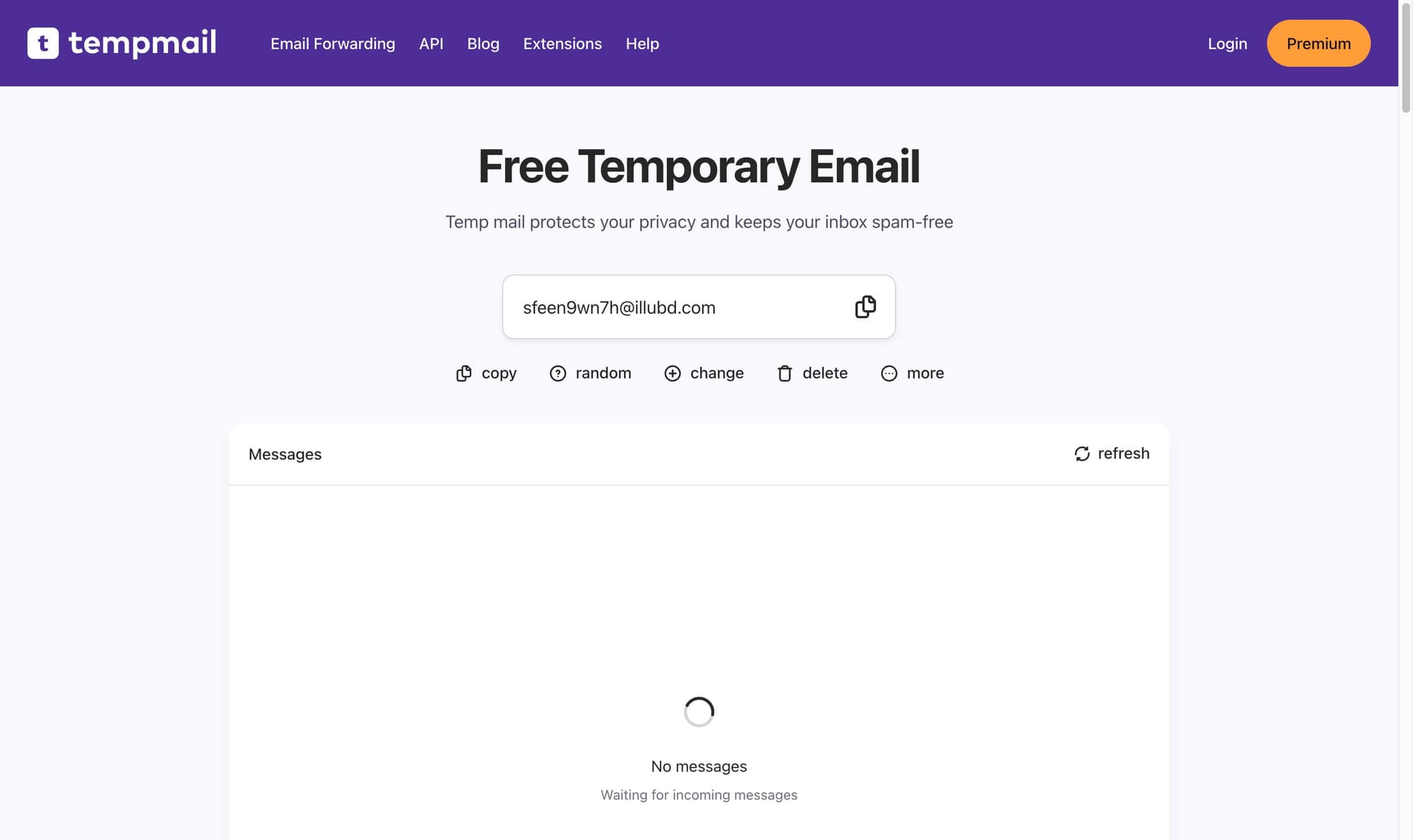
- Copy your address.
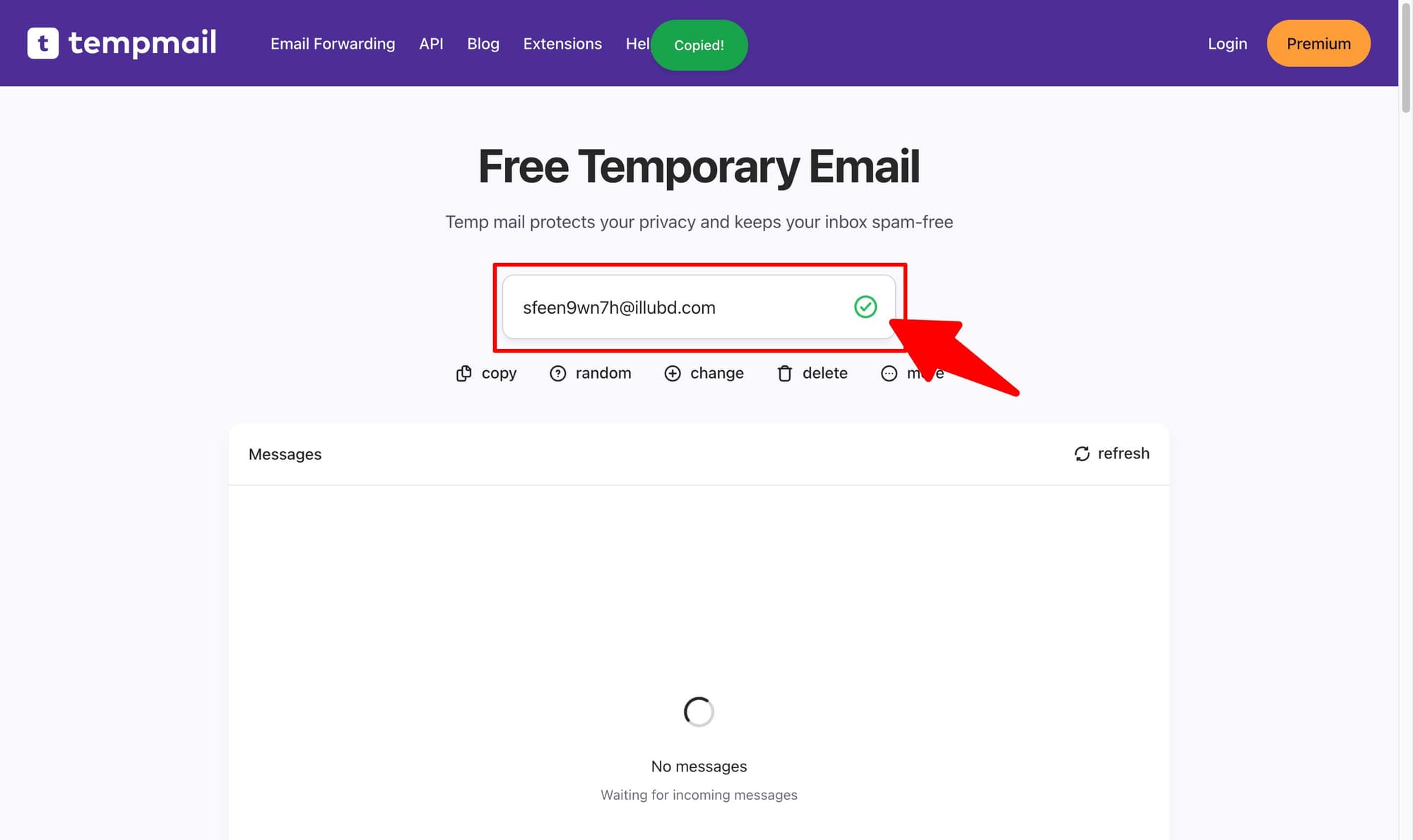
- Use it to register on any website, download a resource, get an attachment, or access free content.
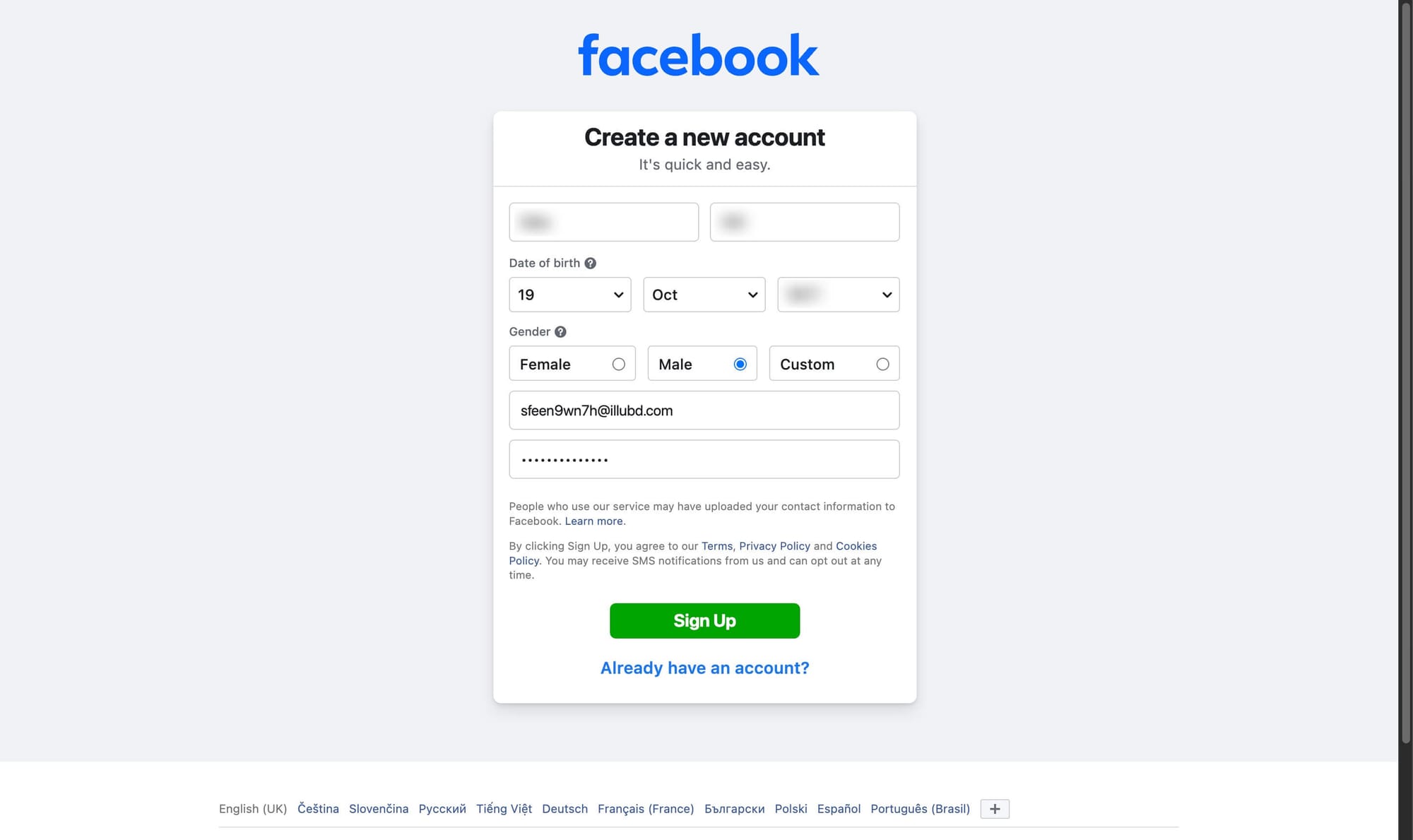
- Check your inbox: Incoming messages appear instantly in your temporary mailbox.
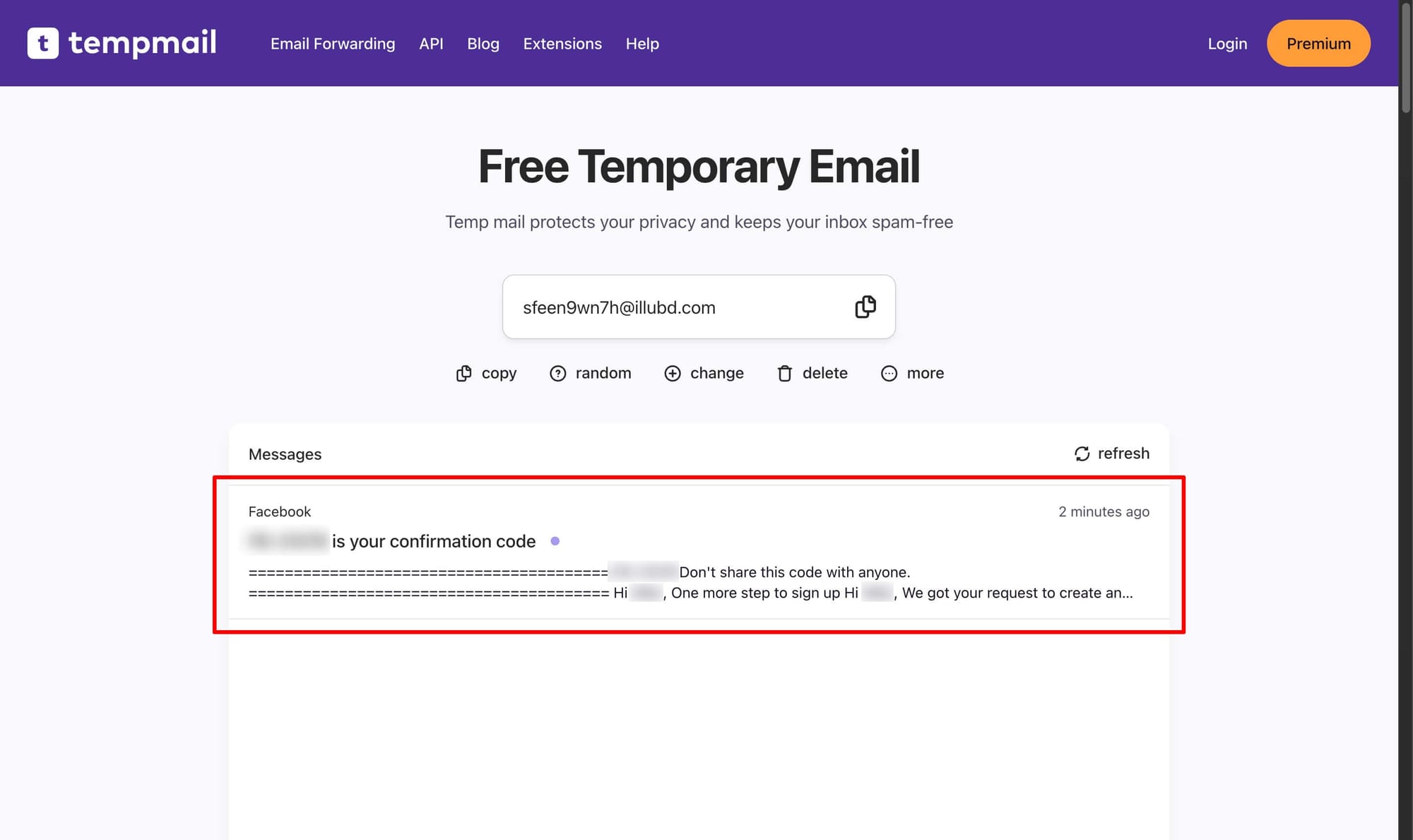
- Do whatever you need before the address expires.
- When finished, simply close the tab or generate a new address. Everything else deletes after a short period of time. It’s that simple.
For detailed help, visit our support section, where you’ll find answers to common questions and even API documentation, which we know is relevant for many. If you plan to use it regularly for work or testing, bookmark our tools page for easy access to integrations and more utilities!
Common Misconceptions About Temporary Mails
Many users still confuse temporary e-mail with spam or illegal activity. In reality, it’s a legitimate and essential tool for online safety. Let’s clarify a few points.
“Short-term mails are unsafe.”
False. Temporary email services offer a key layer of privacy: anonymity. Your main email address remains safe, while you use another one that prevents people from accessing your data.
“Disposable email addresses can’t receive real messages.”
They can, including activation links, codes, and attachments. Temp emails simply have shorter lifespan, for a reason.
“Temporary e-mail is only for shady use.”
On the contrary, millions of professionals use temp mail for testing, marketing, saving time and doing their research daily. It’s a best practice for privacy, not secrecy.
If you are interested in other complementary tools to further boost your privacy, you may have a look at Alias Email Blog, which comments on solutions to further boost your online safety.
Frequently Asked Questions (FAQs)
1. Is temporary mailing safe?
Yes. Reputable providers like Temp Mail delete data after expiration. No personal information is collected. It’s one of the simplest forms of email privacy available. And it works very, very efficiently.
2. How long does a temporary account for mail last?
Most temporary mail addresses remain active for a day. To top that off, forwarding options are also free, but for a limited time. Premium users can get useful advantages, like extended active time and having more emails active.
3. How is temporary email different from other options?
The core difference lies in its self-destruction. You may also unlock even more privacy with premium features, so it’s even more powerful.
So Why Temporary E-mail Matters for Privacy Protection?
Digital privacy is becoming harder to maintain as online services track users across platforms. Every email you share becomes another link between your online identities.
A temporary one breaks that chain, as you may create a specific mail for a task and forget about it, which gives you total control of privacy. If one address receives spam, you simply stop using it.
The advantage extends beyond spam: temporary mailboxes limit exposure to phishing attacks, data mining, selling of your data and tracking pixels. They remove pretty much all risk by creating a very private environment which is difficult for people to reach in the long-term.
Anonymity tools are becoming essential for maintaining digital privacy in everyday browsing. In that sense, temporary e-mail simply brings that same principle to instant email creation.
Key Takeaways
In a time where data breaches and spam lists grow daily, short-term mails have become a shield for your identity. No matter if you’re a developer testing new software, a shopper avoiding marketing lists, a designer testing, or someone who simply values privacy, using temporary mail is one of the easiest steps you can take to stay secure.
With these tools, you can generate a disposable email in seconds, receive messages instantly, and walk away without leaving a trace. And if you need professional-grade tools, from custom domains to extended forwards, the premium subscription gives you full control. It is not mandatory, but very, very handy! Start protecting your inbox today at Temp Mail, and explore more privacy resources and tools in our blog and help center.
Because when your inbox stays private, your entire online life does too.


